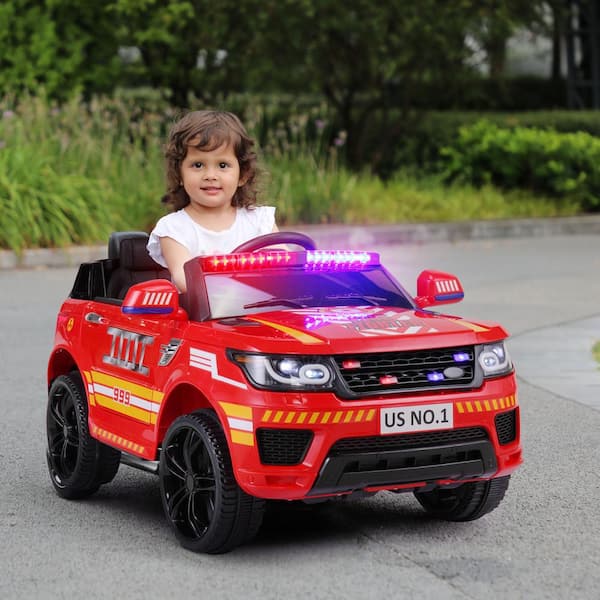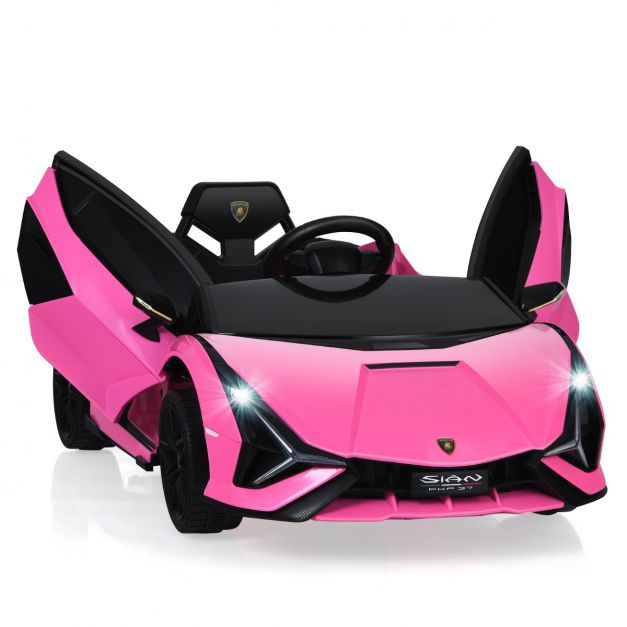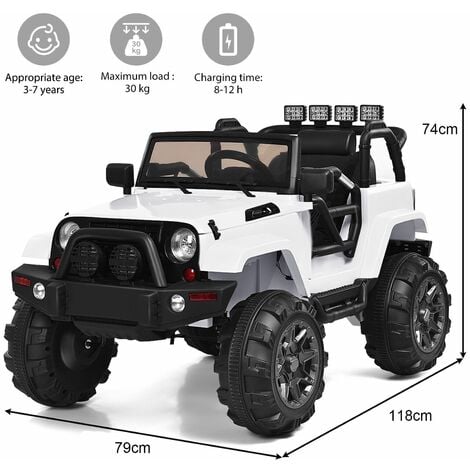Top Info For Choosing Kids Ride On Cars
Top Info For Choosing Kids Ride On Cars
Blog Article
What Information Do I Need To Know About Battery Life & Charging Time For An Electric Ride-On Child's Car?
Understanding the battery and charging times of an electric kid's ride-on vehicle is crucial for ensuring maximum performance and continuous playtime. Here's the information you must know - Battery Type -
The majority of electric ride-on cars for kids are powered by rechargeable batteries. They are either lead-acid or Lithium-ion. Lithium-ion batteries last longer life span and faster charging time compared to lead acid batteries.
Battery Capacity
The time of operation for a ride-on car is determined by the battery capacity. It is measured in amp hours or Watt-hours. Batteries with higher capacity provide more playtime before needing to recharge.
Run Time -
The runtime of an electric car is the length of time that a vehicle is able to run continuously on a single battery charge. It is affected by factors like battery capacity, power of the motor, the terrain, or weight of a driver.
The typical run time for electric ride-on vehicles ranges from 30 minutes and 2 hours. However, lithium batteries with high capacity are able to provide longer run times.
Charging Time
The charging time refers to how long it takes to fully charge the battery once it is depleted. The charging time can differ based on the battery capacity, charger specs and the charging methods.
Charging times for electric ride on automobiles are generally between 8-12 hours. Some models, particularly ones with lithium-ion battery technology might have faster charging times.
It's crucial to follow the recommendations of the manufacturer for charging to ensure safety and longevity of the battery. The performance of the battery and its longevity can be negatively affected through overcharging or undercharging it.
Charging Methods Charging Method
Electric ride-on cars are generally equipped with a charger that can be connected to an ordinary home outlet. Certain models come with fast-charging capabilities or a smart charging system that monitors battery charge state and adjusts the rate of charging in line with the state of charge.
To avoid any harm to the battery or electrical system, ensure that the charging connector and port are compatible with chargers provided in your ride-on car.
Additional Batteries
Some ride-on electric vehicles will allow you to buy extra batteries or spares for a longer playtime. A supply of batteries allows you to change out battery that is depleted to fully charged ones, minimizing the amount of time between sessions.
If you know the charging times and battery life of your electric kids' car you can have endless playtime and adventures. Continuously charging the battery, and following proper charging practices will help to extend the life of your battery and improve its performance. Check out the top rated JCB ride on digger for website tips including pedal car, two seater childrens electric cars, electric toy car, childrens ride on, toy car for car, electric two seater cars, race car toy car, childrens digger, toy car toy car, childrens electric ride on and more. . 
What Are The Different Features And Accessories That Are Available With The Ride-On Car?
Ride-ons come with features and other accessories that help them to be more authentic. They can also provide children with a more enjoyable driving experience. These are some common features and accessories that are that are available on ride-ons
The majority of ride-on vehicles have working headlights. They highlight the roadway improving visibility, especially in dark areas or nighttime driving.
Horn Sounds
Ride-on vehicles often have a horn button or steering wheel that emits horn sounds when it's pressed. It allows children to let others know they're there and play the role of a real car.
MP3 Player Compatibility MP3 Player Compatibility
Some ride-on cars are compatible with MP3 players, allowing kids to connect their portable devices via USB or an auxiliary input. You can play your favorite songs while driving, enhancing the fun factor of the ride-on vehicle.
Realistic Engine Noises -
Ride-on car sound effects may be built in to simulate real engine sounds.
Remote Control
Certain ride-on cars come with a parental remote which allows parents to operate the car remotely and provide supervision or assistance in the event of need. Parents can steer the car, control the speed, and stop the vehicle remotely, which ensures peace of mind and security.
Seat Belts -
Safety harnesses and seat belts are commonly found in vehicles that ride on. They offer an extra layer of protection, keeping the child from falling while playing.
Doors for Working Door for Working
A variety of ride-on cars have doors that are functional, which can be easily opened and closed. They let children leave or enter the vehicle quickly and in a realistic manner.
Storage Compartment
Some ride-ons come with the option of a trunk or compartment which allows kids to keep small toys, snacks, and other things. This feature is practical and versatility.
Adjustable Seats -
Certain ride-on vehicles have adjustable seats, which can be moved forwards or reversed to accommodate children of different heights or to allow extra legroom for children as they increase in height.
Remote Emergency Stop Buttons
Alongside remote control, some ride-on cars also come with an emergency stop button, which allows parents to stop the car in the event of a dangerous or emergency situation.
Ride-on cars come with accessories and features that enhance the enjoyment, safety and realistic nature of their journey. Children can engage in fantasiastic games and have fun adventures as they drive their own cars. See the most popular go here for kids ride on cars for more examples including toy the car, ride on digger, childrens digger, a toy car, two seater electric cars, a toy car, remote control childrens car, toy car toy car, ride ons, a toy car and more. . 
What Kind Of Children's Remote Control Cars Are Available? What Are The Pros And Cons?
The diverse sizes, designs, prices, and types of children's cars with remote controls can be found to suit the requirements and budgets of all. Below is a list of different types of remote control cars for kids, with their sizes, price ranges, and pros and con.
Electric RC Cars – Battery-powered remote-controlled cars that are suitable for use indoors or outdoors. There are a variety of styles of RC cars, such as trucks, buggies and sportscars.
Nitro RC Cars – Gas-powered remote controlled cars with higher performance and speeds However, greater maintenance and knowledge is required for operation. These cars are usually larger and cost more than electric RC vehicles.
Scale models are a replica of real life vehicles including trucks and cars. They are also controlled remotely. Scale models vary from 1 -10 to 1-24, with larger scales providing more detail.
Sizes -
The sizes of remote-controlled vehicles for children vary from tiny micro-sized versions to larger-scale replicas. The car's size can affect its speed, performance, and handling characteristics.
Micro-sized cars are small and compact. They're ideal for young children and indoor use. These larger models offer more power and are durable and are perfect for off-road and racing in the outdoors. driving.
Prices
Prices for remote-controlled children's vehicles differ based on factors such as dimensions, features, and brands.
Micro-sized electric and nitro powered RRC cars are available in sizes that range from $20 up to $100.
Scale model cars and high-end hobby RCs range from several hundred to over 1,000 dollars, depending on how precise and powerful they are.
Pros and Cons
Pros -
Remote Control Cars for Children These cars are perfect to entertain your children. They can be used by adults as well as children.
Operating an R/C car helps children develop spatial awareness, problem solving and hand-eye cooperation.
Social Interaction RC cars are fun to play with family and friends, and encourage social interaction and cooperation.
Customization - Many RC vehicles can be upgraded by adding modifications and accessories that will enhance their performance and appearance.
Cons
Costs - Remote controlled cars designed for children, particularly ones with top-of-the-line features and model that are hobby-grade are often very costly.
Learning Curve: Operating a RC vehicle requires some practice and. Younger children may initially find it difficult to control the controls.
Maintenance - Vehicles with RC engines need regular maintenance. This includes cleaning, lubrication, as regular repairs and replacements of parts.
Safety Issues - RC vehicles pose dangers to safety such as collisions, falls and electrical dangers when they're not used under supervision of an adult and proper care.
All children of ages can love remote-controlled cars. However, it is important to think about things like the cost, size, and safety prior to deciding on the right model. Hobby-grade RC vehicles are best for older and enthusiast children, while simpler cars are ideal for children who are younger and less experienced children. Take a look at the best Audi ride on car kidscars.co.uk tips for website advice including toy car, childrens ride on, childs electric ride on car, childrens electric ride on, ride on car, a toy car, remote control childrens car, remote control childrens car, electric ride on, electric ride along car and more. .